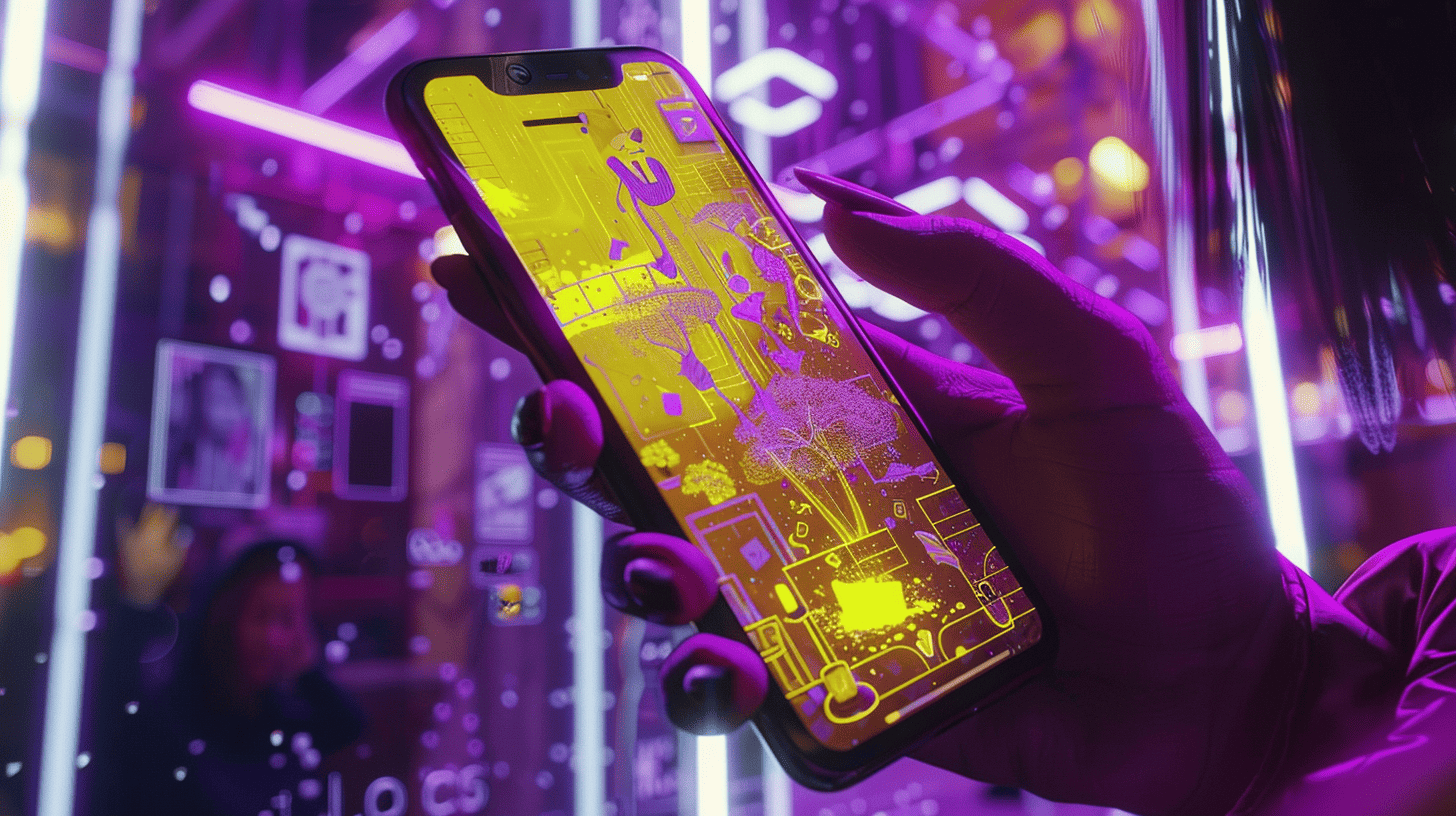How Major Brands and Corporations Are Entering Play-to-Earn

The Play-to-Earn (P2E) model is transforming the gaming industry by allowing players to earn real-world rewards through blockchain-based economies. Unlike traditional gaming, where in-game assets have no tangible value outside the platform, P2E enables gamers to trade, sell, and monetize their digital items, making virtual worlds more financially engaging.
With the rise of Web3 and decentralized finance, major corporations are now recognizing the potential of P2E. Brands that once viewed gaming as a mere marketing channel are now investing in blockchain gaming projects, NFTs, and metaverse integrations. The question is: why are they making this shift?
For companies, P2E presents an opportunity to engage a new generation of consumers who value digital ownership and decentralized ecosystems. By tapping into blockchain gaming, brands can enhance customer loyalty, create new revenue streams, and future-proof their businesses in an increasingly digital world.
In this article, we’ll explore how leading corporations are entering the P2E space, the strategies they are adopting, and what this means for the future of gaming and commerce.

Why Major Companies Are Interested in P2E
As P2E gaming gains momentum, major brands and corporations are recognizing its potential. But why are they entering this space?
New Revenue Streams & Engagement Opportunities
P2E opens up fresh monetization avenues beyond traditional product sales. Companies can generate revenue through in-game marketplaces, tokenized assets, and branded digital goods. Additionally, P2E fosters deeper engagement by giving players financial incentives to interact with their ecosystems.
Brand Loyalty Through NFTs and In-Game Assets
By integrating NFTs and exclusive digital assets into games, brands can strengthen customer loyalty. Limited-edition branded skins, virtual merchandise, and tokenized collectibles allow users to form a stronger emotional connection with a company’s identity. Unlike traditional promotions, these assets retain value and can be traded within or beyond the game environment.
Access to a Younger, Tech-Savvy Audience
The P2E space is dominated by digital-native, crypto-friendly users who are highly engaged in virtual economies. Brands tapping into this audience can establish an early presence in Web3, positioning themselves as innovators in the evolving digital landscape. This also provides an opportunity to convert gamers into long-term brand advocates through immersive and rewarding experiences.

Examples of Big Brands in P2E
Gaming Giants: How Traditional Studios Are Integrating Blockchain
Major gaming companies are gradually embracing P2E models and blockchain technology to enhance player engagement and create new revenue streams.
- Ubisoft
One of the first AAA publishers to explore blockchain gaming, Ubisoft launched Quartz, a platform for in-game NFT items. The company sees blockchain as a way to provide players with true ownership of digital assets.
- Square Enix
The developer behind Final Fantasy and Tomb Raider has invested heavily in Web3, including NFT-based games and blockchain partnerships, signaling its commitment to P2E.
- Electronic Arts (EA)
While initially hesitant, EA has acknowledged blockchain’s potential in gaming and is exploring how to integrate digital assets without disrupting core gameplay.
Fashion & Luxury Brands: NFT Skins and Collaborations
Luxury fashion houses and sportswear brands are entering the P2E space by offering digital collectibles, NFT skins, and exclusive in-game collaborations.
- Nike
Through its acquisition of RTFKT, Nike has launched digital sneakers and NFT wearables that can be used in metaverse environments and blockchain-based games.
- Adidas
Partnering with BAYC (Bored Ape Yacht Club) and other Web3 projects, Adidas has released NFT apparel, allowing holders to unlock exclusive physical and digital items.
- Gucci
The luxury brand has collaborated with metaverse platforms like The Sandbox, offering exclusive virtual fashion items and NFT collections tailored for digital worlds.
Tech & Finance Companies: Blockchain Investments and Partnerships
Global tech and financial corporations recognize the potential of blockchain in gaming and have been actively investing in the space.
- Meta (formerly Facebook)
With its pivot towards the metaverse, Meta is heavily investing in blockchain-based virtual economies, NFTs, and interoperable digital experiences.
- Microsoft
The tech giant has partnered with blockchain firms to support decentralized gaming infrastructure and is exploring NFT integrations within its gaming ecosystem.
- Visa
Recognizing the financial aspect of P2E, Visa has invested in blockchain startups and is developing payment solutions tailored for Web3 gaming transactions.
The participation of these major brands in Play-to-Earn signals a broader shift toward mainstream adoption of blockchain gaming. As these companies continue to innovate, the P2E ecosystem is expected to grow exponentially, offering new opportunities for players and developers alike.

How Brands Enter P2E: Key Strategies
The P2E market is rapidly evolving, and major brands are finding innovative ways to integrate into this space. From launching their own gaming ecosystems to strategic partnerships, corporations are leveraging blockchain technology to engage new audiences and create fresh revenue streams. Here are the key strategies they use:
Launching Their Own Games: Custom P2E Ecosystems
Some brands are taking a direct approach by developing their own P2E games, built around their products, services, or brand identity. These games often feature unique in-game economies, exclusive NFTs, and token rewards, providing an immersive experience that strengthens brand loyalty.
Example:
Nike has ventured into blockchain gaming by integrating NFT-based sneakers into digital environments, allowing users to earn rewards through gameplay.
Why It Works:
Owning a proprietary P2E game ensures full control over branding, monetization, and user engagement.
NFT & Metaverse Collaborations: In-Game Skins, Collectibles, and Virtual Spaces
Brands are tapping into the P2E ecosystem through NFTs and the metaverse, offering digital assets that players can buy, trade, and use within games. These assets can include character skins, branded accessories, and exclusive virtual locations.
Example:
Gucci has partnered with various metaverse projects to launch digital fashion items, turning virtual collectibles into valuable, tradeable assets.
Why It Works:
Limited-edition NFTs drive demand and create a new form of digital ownership tied to brand prestige.
Sponsorships & Partnerships: Collaborating with Existing P2E Projects
Instead of developing their own games, some brands choose to enter the P2E space through sponsorships and partnerships with established gaming projects. This allows them to integrate their products and branding into popular games without the complexities of game development.
Example:
Coca-Cola has partnered with blockchain-based virtual worlds to release branded in-game items and experiences.
Why It Works:
Partnering with an existing P2E game provides instant access to an engaged gaming community and reduces development costs.
By utilizing these strategies, brands are positioning themselves at the forefront of the P2E revolution, merging gaming, blockchain, and digital ownership to create new business opportunities. The next wave of corporate adoption will likely bring even more creative integrations into this space.

Challenges & Risks for Big Brands in P2E
Regulatory Issues and Market Volatility
Entering the P2E space presents significant regulatory challenges for major brands. Governments worldwide are still defining legal frameworks for blockchain-based gaming, creating uncertainty around compliance requirements. Some jurisdictions classify P2E tokens as securities, subjecting them to strict financial regulations, while others impose outright bans on crypto-related transactions. Additionally, the volatility of cryptocurrencies affects in-game economies, making it difficult for brands to ensure price stability for players and maintain a sustainable financial model.
Community Backlash: Traditional Gamers vs. Crypto Enthusiasts
One of the biggest hurdles for established brands in P2E is navigating the cultural divide between traditional gamers and crypto enthusiasts. Many hardcore gamers view blockchain integration with skepticism, associating NFTs and tokenized assets with cash grabs and pay-to-win mechanics. Past failures, such as rushed NFT launches and poorly designed token economies, have fueled negative sentiment. Brands must carefully balance blockchain monetization with genuine gaming value to avoid alienating their existing player base.
Sustainability Concerns: Scams and Playability Issues
The P2E market has been plagued by scams, rug pulls, and unsustainable economic models, leading to concerns about long-term viability. Many early P2E games focused more on token speculation than gameplay, resulting in poor user retention. Brands entering the space must prioritize high-quality game design, sustainable tokenomics, and transparency to build trust. Without these elements, even well-known companies risk damaging their reputation and losing consumer confidence in their P2E initiatives.
Despite these challenges, the potential for innovation in P2E remains vast. Brands that can address regulatory hurdles, bridge the gamer-crypto divide, and create sustainable ecosystems will have a competitive edge in this evolving market.

Future of Corporate Involvement in P2E
The P2E sector is at a turning point, with major corporations and global brands exploring new ways to integrate blockchain gaming into their business strategies. But will P2E become a mainstream gaming model, or will it remain a niche ecosystem driven by crypto-native users?
One of the key factors influencing the future of P2E is the advancement of AI and blockchain technology. AI-powered gaming mechanics can enhance user experience, automate complex in-game economies, and introduce dynamic storytelling. Meanwhile, blockchain scalability solutions — such as layer-2 networks and sidechains — are making P2E platforms faster and more cost-efficient, addressing previous limitations like high transaction fees and network congestion.
Additionally, regulatory clarity will play a crucial role in determining how deeply corporations engage with P2E. As governments worldwide establish clearer guidelines for crypto gaming, brands may feel more comfortable entering the space, investing in sustainable models rather than speculative trends.

Conclusion
The growing interest of corporations in the P2E space presents both opportunities and challenges. On one hand, increased investment and brand involvement could lead to higher-quality games, mainstream adoption, and more lucrative opportunities for players. On the other hand, corporate dominance may shift the P2E landscape away from decentralization, potentially limiting player autonomy and profit potential.
For players, the future of P2E will depend on how well the industry balances innovation, accessibility, and decentralization. Will this evolution create a fairer, more engaging gaming economy, or will it lead to a corporate takeover of yet another digital frontier? The next few years will be critical in defining the path forward.
